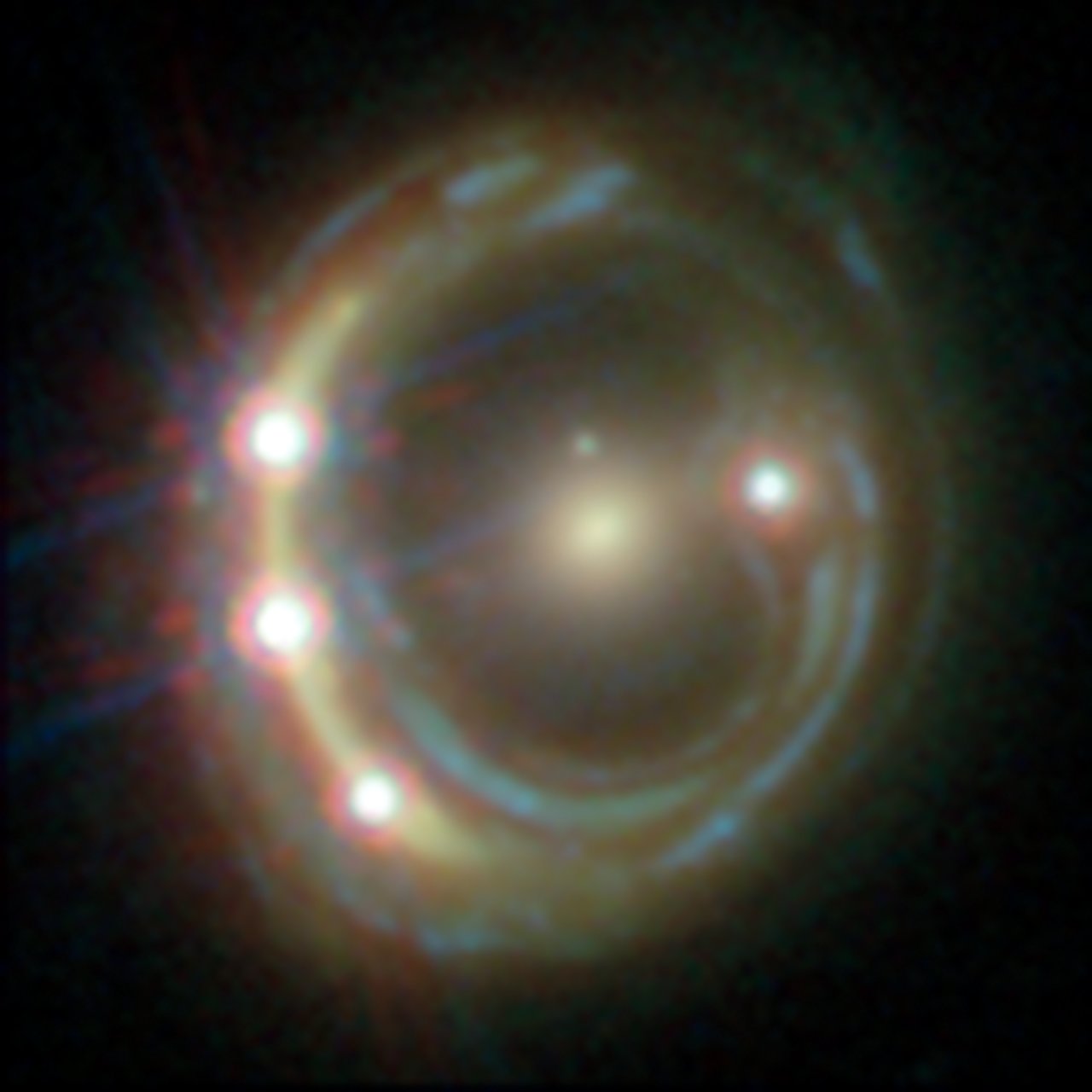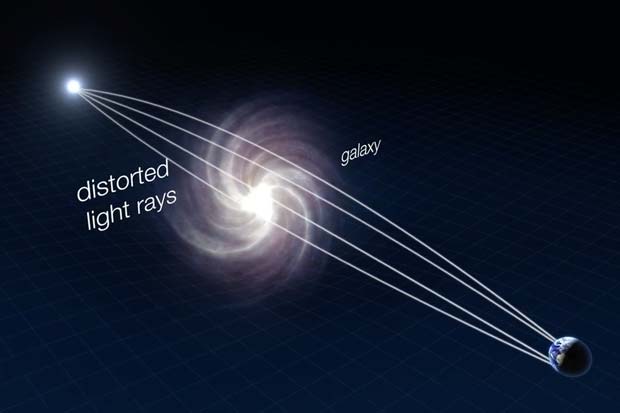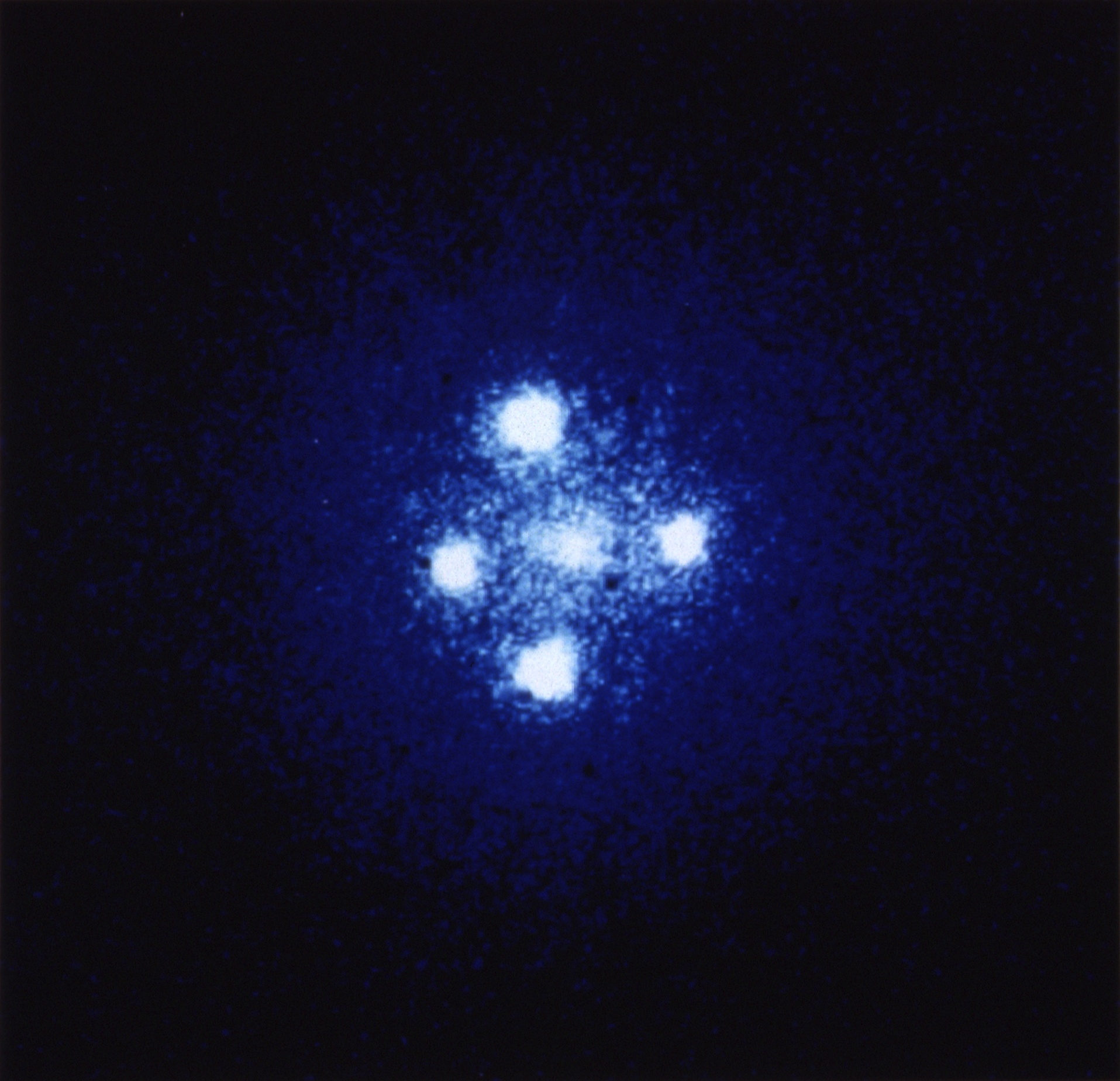Einstein's Gravitational Lenses Could Clear Up Roiling Debate on Expanding Cosmos

Warps in the fabric of space-time can act like magnifying glasses, and that may help solve a cosmic mystery about the rate of the universe's expansion, a new study found.
This research may one day lead to more-accurate models of the cosmos, which could shed light on the universe's ultimate fate, the researchers said.
The universe has continued expanding since its birth, about 13.8 billion years ago. By measuring the present rate of cosmic expansion, known as the Hubble constant, scientists can try to learn the fate of the universe, such as whether it will expand forever, collapse upon itself or rip apart completely.
Related: Einstein's Theory of Relativity Explained (Infographic)
There are currently two primary strategies for measuring the Hubble constant. One involves monitoring nearby objects whose properties scientists understand well, such as stellar explosions known as supernovas and pulsating stars known as Cepheid variables, to estimate their distances. The other focuses on the cosmic microwave background, the leftover radiation from the Big Bang, examining how it has changed over time.
However, this pair of techniques has produced two different results for the value of the Hubble constant. Data from the cosmic microwave background suggests that the universe is expanding at a rate of about 41.9 miles (67.5 kilometers) per second per megaparsec (a distance equivalent to 3.26 million light-years). However, data from supernovas and Cepheids in the nearby universe suggests a rate of about 46 miles (74 km) per second per megaparsec.
This discrepancy suggests that the standard cosmological model — scientists' current understanding of the universe's structure and history — might be wrong. Resolving this debate, known as the Hubble constant conflict, could shed light on the evolution of the cosmos.
Breaking space news, the latest updates on rocket launches, skywatching events and more!
In the new study, an international team of researchers explored another way to measure the Hubble constant. This strategy depends on the definition of gravity, according to Albert Einstein's theory of general relativity, as the result of mass distorting space-time. The greater the mass of an object, the more that space-time curves around the object, and so the stronger the object's gravitational pull is.
That means gravity can also bend light like a lens would, so objects seen through powerful gravitational fields, such as those produced by massive galaxies, are magnified. Gravitational lensing was discovered a century ago, and today, astronomers often use these lenses to see features otherwise too distant and faint to detect with even the largest telescopes.
The new research analyzes gravitational lenses to estimate their distances from Earth, data that could help researchers estimate the rate at which the universe has expanded over time.
"The new method has great potential to provide a unique perspective in measuring the Hubble constant," study lead author Inh Jee, formerly an astrophysicist at the Max Planck Institute for Astrophysics in Garching, Germany, told Space.com.
One key to estimating the distance of a gravitational lens from Earth depends on an odd feature of gravitational lensing: It often produces multiple images of lensed objects surrounding the lens, resulting in a so-called "Einstein cross." Because the light that creates these images takes routes of different lengths around the lens, any variation in the brightness of a lensed object will be visible in some of the images before the others. The greater the mass of the lens, the greater the bending of light, and thus the bigger the time difference between observations of the images. Scientists can use these details to estimate the strength of the gravitational field of the lens and thus its mass.
That mass can then feed into calculations used to estimate distance. But scientists first need an additional key measurement.
The other key to estimating the distance of a gravitational lensing galaxy from Earth involves analyzing the positions and velocities of stars within the lens. When these details are combined with estimates of the mass and strength of the gravitational field of the lensing galaxy, scientists can estimate the actual diameter of the lensing galaxy.
They can then compare the actual diameter of a lensing galaxy with its apparent diameter as seen from Earth. The difference between these values can help researchers estimate how far a galaxy of a given size must be in order to appear the size that it does from Earth.
The researchers applied this technique to two gravitational lensing systems. In their results, the scientists reached a Hubble constant with a value of about 51.2 miles (82.4 km) per second per megaparsec. Although this value is higher than both of the more-established values for the Hubble constant, Jee noted that there are still high levels of uncertainty with this method. With more data leading to greater certainty, this technique might end up favoring one or the other established value, or it might indeed lead to a different third value, she said.
"Since this is a new method with large uncertainties, we have a lot of room to improve the measurement," Jee said. "For the method to provide a competitive level of precision to other methods, we need better measurements of the motions of stars in lens galaxies."
This new technique offers a potential advantage compared to strategies that seek to measure the Hubble constant based on the cosmic microwave background: The latter rely heavily on one of several competing cosmological models used to predict the evolution of the universe over time, while this new method does not, Jee said. Compared to strategies that seek to measure the Hubble constant based on nearby supernovas and Cepheid variables, this method offers another advantage: In those strategies, measurements of distances to nearby objects may be off if the nearby environment differs significantly from the more-distant universe, she added.
"We will have dozens of new lens systems in the near future that will allow us to reduce substantially our measurement uncertainty," study co-author Sherry Suyu at the Max Planck Institute for Astrophysics, told Space.com.
Jee, Suyu and their colleagues detailed their findings in the Sept. 13 issue of the journal Science.
- Nature's Lens: How Gravity Can Bend Light Like a Telescope
- New Hubble Constant Measurement Stokes Mystery of Universe's Expansion
- In Photos: Universe's Expansion Revealed by Quasars & Cosmic Lenses
Follow Charles Q. Choi on Twitter @cqchoi. Follow us on Twitter @Spacedotcom and on Facebook.

Charles Q. Choi is a contributing writer for Space.com and Live Science. He covers all things human origins and astronomy as well as physics, animals and general science topics. Charles has a Master of Arts degree from the University of Missouri-Columbia, School of Journalism and a Bachelor of Arts degree from the University of South Florida. Charles has visited every continent on Earth, drinking rancid yak butter tea in Lhasa, snorkeling with sea lions in the Galapagos and even climbing an iceberg in Antarctica. Visit him at http://www.sciwriter.us


